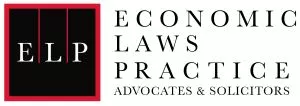Ordinarily, the phenomenon of taxation involves payment of tax at lower rates on the inputs and a relatively higher rate of tax on the final product / output. On the contrary, as the name suggests, inverted duty structure connotes a situation when the rate of tax on inward supply is higher than rate of tax on outward supply. There are several scenarios leading to inverted duty structure. One such example is a case where while the input and output supplies are same, the rate varies, especially, where the outward supplies are made under a concessional notification. Such concession on the outward supplies could be on account of several reasons such as, the purpose for which the goods are used by the receiver, entity status of the receiver, etc.
A classic example is supply of information technology products by an IT Company to Government Departments, PSU, and to other Research and Educational Institutes. In this case, at the time of procurement from the Distributors and / or Original Equipment Manufacturers, 18% GST is levied. When such goods are supplied to specified institutions such as PSU, Government Departments, etc. (i.e., outward supply), 5% GST is levied. Same goods, when supplied to other users attract 18% GST. In this case, to the extent of supplies to specified end users for which a concessional rate has been prescribed, there is accumulation of input tax credit on account of inverted duty structure.
Section 54 (3) (ii) of the CGST Act, 2017 read with Rule 89 (5) of the CGST Rules, 2017, inter alia, provides for a refund of accumulated input tax credit on account of inverted duty structure. It may be worthwhile to note that the key conditions for being eligible for a refund in terms of the above provisions are that:
- Rate of tax on input is higher than rate of tax on output supplies;
- The output supplies are not exempt or nil rated supplies; &
- Refund on such supplies is not specifically restricted by the Government.
Be that as it may, various businesses suffering inverted duty structure under concessional rate supplies were hitherto getting refunds under the said provisions.
Subsequently, the CBIC issued Circular No. 135/05/2020 - GST dated 31.03.2020 ('Refund Circular') which, inter alia, provided clarification on various aspects pertaining to GST refunds such as bunching of refund claims across financial years, guidelines for refunds of Input Tax Credit under Section 54 (3), requirement to mention HSN / SAC, change in manner of refund of tax paid on supplies other than zero rated supplies, etc.
Para 3 of the said Circular dealt with accumulation of credit on account of reduction in tax rate. Para 3.2 therein, covers a situation where there is accumulation of credit, on account of reduction in GST rate. The illustration provided in the Circular is a case where the rate of tax at the time of procurement is 18% and subsequently there is a change in rate to 12% thereby resulting in accumulation of credit. As per the Refund Circular, such accumulation, resulting on account of change in rate of tax is not eligible for a refund under Section 54 of the CGST Act.
This interpretation as held in Para 3.2 of the Refund Circular has led to considerable litigation, right upto verdicts of the Hon'ble High Courts. The Writ applicants have, inter alia, categorically, requested the Courts either to strike down the Circular or read it down to the extent it denies refund in terms of Para 3.2. The key grounds in the Writs are:
- The governing section no-where provides a restriction on claiming a refund in cases where the accumulation is on account of rate change.
- The Circular has been issued in terms of the powers provided in Section 168 of the CGST Act. The said Section provides the powers to issue orders, instructions, etc. for the purpose of ensuring uniformity in the implementation of the Act. Thus, under the guise of Section 168, which is essentially for ensuring efficient implementation of the Act, the Circular cannot impose conditions which are not provided in the Act itself.
Rightly so, the Hon'ble High Court of Gauhati in the case of BMG Informatics Private Limited vs. Union of India & Ors.1 and the Hon'ble Calcutta High Court in the case of M/s Shivaco Associates & Anr. vs. Joint Commissioner & Ors.2 have taken a view in favour of the assessee basis the above. While providing the decisions, it has been observed that the legislature was mindful of the fact that there may be instances where the input and output supplies are same and consciously, did not create any dichotomy for allowing refund in such cases. Such interpretation which makes the main provision / Act redundant and otiose should be discarded. In yet another case, the Hon'ble Rajasthan High Court in the case of Baker Hughes Asia Pacific Ltd vs UOI & Ors3, also held that refund should be available considering the clear language of the provisions.
An even bigger unfortunate leap in this regard has been issuance of notices to entities denying refunds in cases where the accumulation on account of difference in tax rates when there isn't any rate change between the inward and outward transaction. For instance, a trader purchasing goods i.e., LPG gas at the rate of 18% and selling the same at 5% to domestic customers. It may be apposite to note that such rates exist during the entire duration of purchase and sale transaction i.e. there isn't a rate change between the inward and outward supplies of these goods. The Departmental notices have been issued basis Para 3.2 of the Circular and on the ground that there is no value addition by the trader (the input and output is the same), both of which have effectively been set aside by the Hon'ble High Courts. It was a sliver lining in the cloud to note that the GST Council in its 47th meeting on 28th and 29th June, 2022 had recommended issuance of clarifications in order to remove ambiguity and legal disputes on various issues including the issue of refund under inverted duty structure where the supplier supplies goods under concessional notifications. Considering the rulings of the Hon'ble High Courts and the plain language of the Act, it was likely that the clarification would be on the affirmative.
It's a sigh of relief to the industry that the recommendation suggested by the GST Council in its 47th Council meeting has finally taken a shape and Circular No. 173/05/2022 dated 6th July has been issued to address this situation. The Circular has categorically held that Para 3.2 of the Refund Circular didn't intend to deny refund to a supplier making supply of goods under a concessional notification wherein the rate of tax of output supply is less than the rate of tax on input supply (of the same goods) at the same point of time.
It is very pleasing to see the Government acting so swiftly and issuing clarifications in the right direction at a brisk pace. The Circular thus brings the sunshine again for the entities and we strongly believe that, in coming times, this Circular will play as catalyst to put an end to unwarranted litigation and expeditious disposal of long pending refund claims.
Footnotes
1. 2021 (9) TMI 472 – GAUHATI HIGH COURT
2. 2022 (4) TMI 118 – CALCUTTA HIGH COURT
3. [TS-338-HC(RAJ)-2022-GST] – RAJASTHAN HIGH COURT
This article has been published in the Times of India
The content of this article is intended to provide a general guide to the subject matter. Specialist advice should be sought about your specific circumstances.


